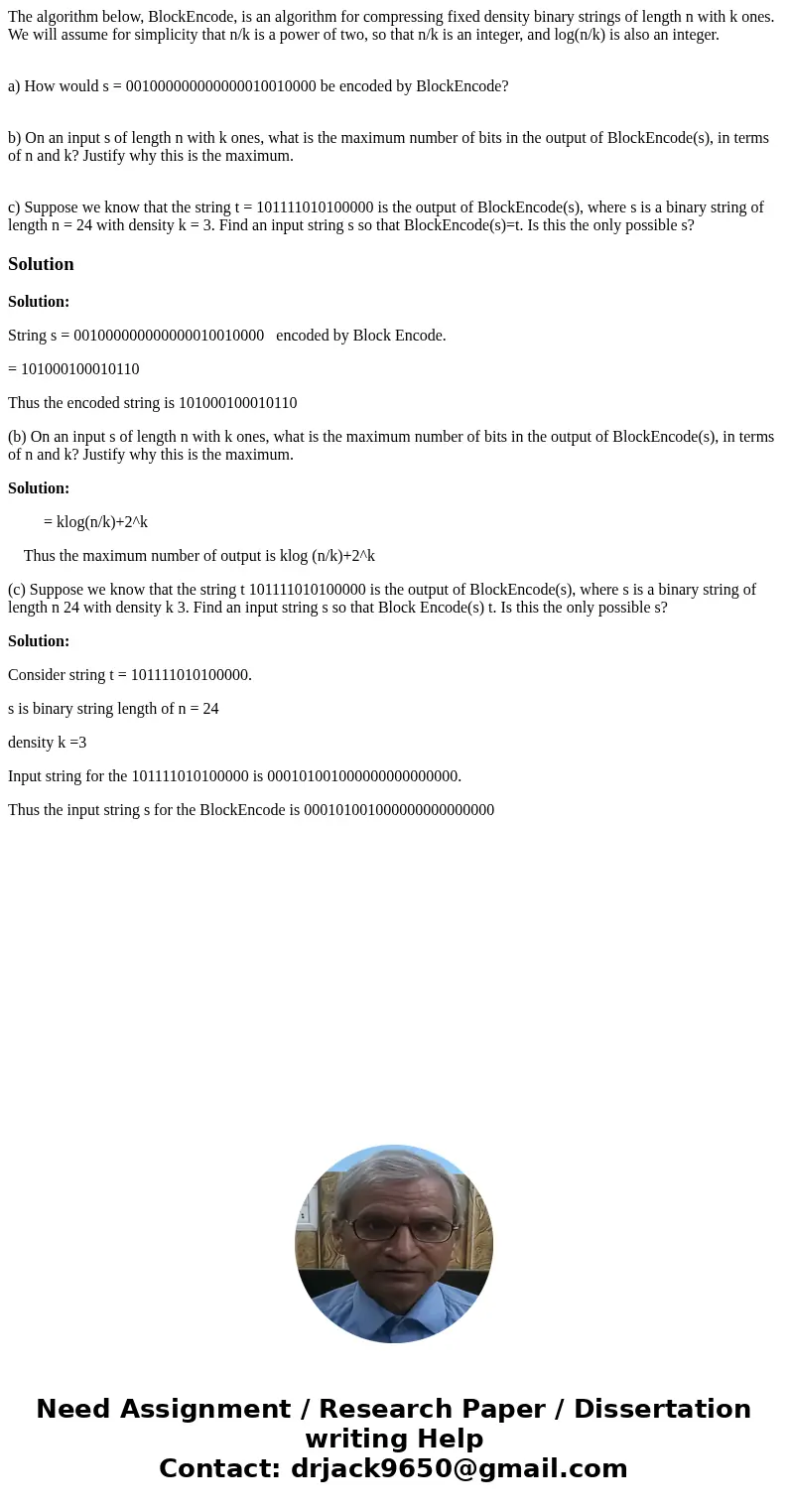The algorithm below BlockEncode is an algorithm for compress
The algorithm below, BlockEncode, is an algorithm for compressing fixed density binary strings of length n with k ones. We will assume for simplicity that n/k is a power of two, so that n/k is an integer, and log(n/k) is also an integer.
a) How would s = 001000000000000010010000 be encoded by BlockEncode?
b) On an input s of length n with k ones, what is the maximum number of bits in the output of BlockEncode(s), in terms of n and k? Justify why this is the maximum.
c) Suppose we know that the string t = 101111010100000 is the output of BlockEncode(s), where s is a binary string of length n = 24 with density k = 3. Find an input string s so that BlockEncode(s)=t. Is this the only possible s?
Solution
Solution:
String s = 001000000000000010010000 encoded by Block Encode.
= 101000100010110
Thus the encoded string is 101000100010110
(b) On an input s of length n with k ones, what is the maximum number of bits in the output of BlockEncode(s), in terms of n and k? Justify why this is the maximum.
Solution:
= klog(n/k)+2^k
Thus the maximum number of output is klog (n/k)+2^k
(c) Suppose we know that the string t 101111010100000 is the output of BlockEncode(s), where s is a binary string of length n 24 with density k 3. Find an input string s so that Block Encode(s) t. Is this the only possible s?
Solution:
Consider string t = 101111010100000.
s is binary string length of n = 24
density k =3
Input string for the 101111010100000 is 000101001000000000000000.
Thus the input string s for the BlockEncode is 000101001000000000000000

 Homework Sourse
Homework Sourse